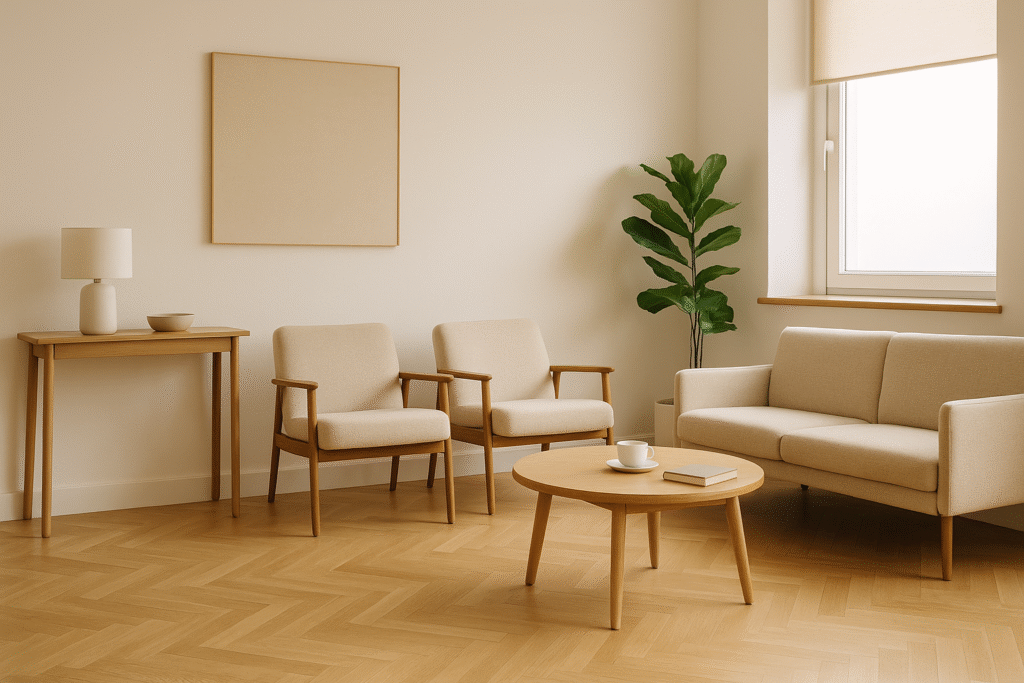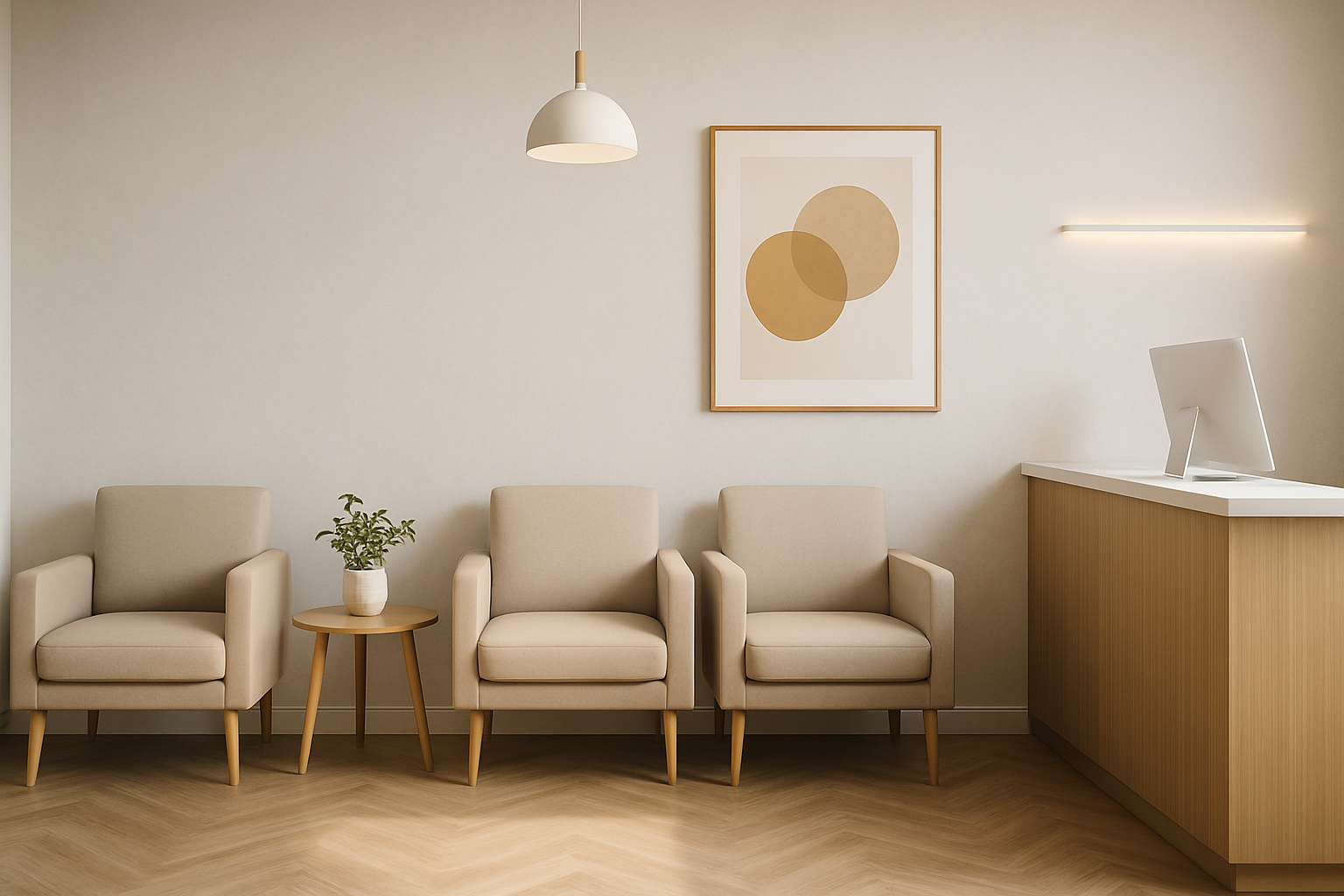In the world of interior design, we often think in terms of aesthetics, layout, and function. But what if design could do more than impress — what if it could genuinely welcome?
That’s the philosophy behind welcomistry: the subtle art of shaping spaces that not only look beautiful, but also feel inviting, warm, and human-centered.
Nowhere is welcomistry more important than in waiting rooms — those often-overlooked spaces where first impressions are formed, nerves can build, and time seems to stretch.
Rethinking the Waiting Room: From Passive to Purposeful
Traditional waiting rooms tend to be sterile and impersonal: rows of rigid chairs, fluorescent lighting, and an outdated stack of magazines.
This setup doesn’t just lack charm — it subtly tells your customer they’re in a space designed for efficiency, not care.
But a well-designed waiting area sets the emotional tone for the entire experience. It can reduce anxiety, foster calm, and even make the wait feel shorter — all without a word being spoken.
This is where welcomistry shines.
Designing with Welcomistry in Mind
Welcomistry isn’t a style — it’s a mindset. Here’s how it transforms the experience of waiting:

🪑 1. Comfort Without Clutter
Soft, supportive seating with natural fabrics helps visitors relax, not just sit. Avoid rows; create small clusters that mimic a living room. Comfort is key — but so is spatial clarity.
🌿 2. Biophilic Touches
Introduce nature. A plant in the corner. A soft landscape painting. Even subtle wood textures can lower stress levels and encourage a sense of presence.
🎶 3. Sensory Atmosphere
Soft lighting. Gentle background music. A subtle scent of lavender or citrus. These details shape mood on a subconscious level, turning a generic space into one that feels curated and kind.
📚 4. Curated Distractions
Forget tattered magazines. Offer a curated coffee table book, a calming visual display, or even a touchscreen with soothing art or informative content. The key is engagement, not noise.
☕ 5. Hospitality Elements
A self-serve beverage station or water infused with fruit isn’t just a treat — it sends the message: You are cared for here.
The Emotional ROI of Good Design
When customers feel welcomed, their perception of service improves — even before they’ve spoken to anyone. Their stress levels decrease. Their trust increases.
In a world where customer loyalty is built on experience, these details aren’t extras. They’re essentials.
Welcomistry: Where Hospitality Meets Design
At its heart, welcomistry is about intention. It’s about using design not just to impress, but to express care — to remind every visitor, client, or patient that they’re not just waiting — they’re being welcomed.
Does this room simply serve a function — or does it offer a feeling?
Because in the quiet in-between moments of a waiting room, that feeling makes all the difference.
